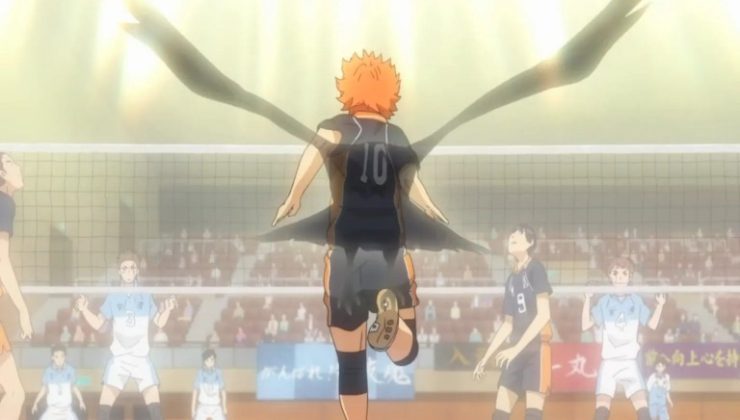Mystery Behind Hinata’s Jump?!

The world of anime has brought us countless unforgettable moments, but few scenes have captured the imagination of viewers as the one involving Hinata’s jaw-dropping jump in Haikyuu!! For fans of the anime, the sequence where Hinata reaches unprecedented heights during his volleyball matches is both mesmerizing and bewildering. But is there a scientific or narrative explanation behind this incredible feat? Let’s dive deep into the mystery behind Hinata’s jump.
Hinata’s Athleticism: A Natural Talent
What Makes Hinata’s Jump Special?
Hinata’s jump is not just an ordinary leap. In the world of Haikyuu!!, his jump is often depicted as reaching supernatural heights, allowing him to perform incredible spikes that seem physically impossible. This has led to discussions about the limits of human physical ability, and how anime exaggerates them to add flair and excitement to the show.
Key Attributes of Hinata’s Athleticism
-
Vertical Leap: Hinata’s jump seems to defy the limitations of human physiology, as he seems to leap higher than most other players on the court.
-
Speed and Agility: His quickness plays a crucial role in his ability to jump at the right moment and reach seemingly unreachable spots.
-
Instincts and Reflexes: Hinata often jumps not only with force but with perfect timing, showing off his instincts and reflexes that make him a top-tier athlete.
Is Hinata’s Jump Physically Possible?
While Haikyuu!! takes liberties in terms of the exaggeration of athletic feats, the reality of human anatomy and biomechanics plays an essential role in determining the potential of real-life volleyball players. Let’s break down how real athletes can achieve some of the feats depicted in the anime.
The Science Behind the Jump
-
Jumping Height: The highest vertical jump recorded by a professional volleyball player is approximately 44 inches. Hinata’s jump seems to reach much greater heights, which suggests the anime takes creative liberties to showcase his extraordinary talent.
-
Muscle Power: A player like Hinata would need immense leg strength, explosive power, and proper technique to jump high enough to rival his anime counterpart’s feats.
Cultural Influence of Hinata’s Jump
Hinata’s jumps represent more than just physical strength—they embody his spirit, determination, and the struggles he faces in becoming the best volleyball player. The way his jumps are portrayed ties into larger themes of perseverance, overcoming obstacles, and pushing the limits of what’s considered possible.
Symbolism of Hinata’s Jump
Hinata’s leaping abilities often symbolize his boundless energy and desire to prove himself. Early in the series, he struggles with his height disadvantage, but his incredible jumps become a symbol of his hard work and growth. In this sense, Hinata’s jump is as much about character development as it is about physical prowess.
The Role of the Haikyuu!! Storyline in Hinata’s Evolution
Hinata’s Development as a Player
At the start of the series, Hinata faces many challenges due to his short stature. However, his determination to overcome these obstacles fuels his ambition to become a great player. His incredible jumps are a direct result of the hard work he puts in, both on and off the court.
Key Moments of Growth
-
Training with Kageyama: One of the most significant turning points in Hinata’s development occurs during his time with his teammate Kageyama. His relationship with Kageyama is tumultuous at first, but through their combined efforts, Hinata learns better timing and improved techniques.
-
Incorporating New Techniques: As the series progresses, Hinata learns to use his speed, agility, and jump more effectively. His evolution from a novice player to a formidable athlete is reflected in his jump, which becomes more powerful and controlled.
Hinata’s Relationship with Other Characters and the Team
Hinata’s growth is not solely due to his individual effort but also thanks to the relationships he forms with his teammates. His teamwork, especially with Kageyama, pushes his jumping abilities to new heights, allowing him to achieve things he once thought were impossible.
Analyzing the Physics Behind Hinata’s Jump
How High Can a Human Jump?
In real-life volleyball, players can achieve impressive vertical jumps, typically ranging from 30 to 40 inches. For comparison, Hinata’s jumps in Haikyuu!! are much higher, often appearing to be in the range of 10 to 12 feet. This jump, however, is an exaggerated trait used for dramatic effect in the anime.
The Physics of Vertical Leaps
-
Force of Takeoff: A higher vertical leap requires the application of great force from the legs to push off the ground.
-
Gravity and Air Time: In reality, gravity would pull players back down after reaching a certain height, but anime physics allows characters like Hinata to defy this law for the sake of spectacle.
-
Muscle Coordination: Jumping involves coordination of various muscles in the body, from the calves to the core. In Hinata’s case, his jump is depicted as a product of flawless technique and muscle control.
What Would it Take to Reach Hinata’s Jump Height?
Reaching the heights Hinata does in Haikyuu!! would require a combination of genetics, specialized training, and advanced jumping techniques. Athletes with the right physical attributes and training could potentially reach incredible vertical leaps, though the anime version of Hinata’s jump remains firmly in the realm of fantasy.
The Cultural Significance of Hinata’s Jump
Hinata as a Symbol of Overcoming Adversity
Hinata’s jump is more than just an athletic feat. It’s a symbol of his ability to overcome challenges. His height disadvantage, which initially limits him on the court, is mitigated by his remarkable jumping ability, making him an underdog character that fans can root for. This dynamic has universal appeal, as it speaks to the power of perseverance.
Hinata’s Influence on Viewers
Hinata’s drive to push beyond his limits inspires countless fans who admire his resilience. The concept of overcoming physical limitations resonates with viewers who may face challenges in their own lives. His jumps symbolize the possibility of achieving greatness through hard work and determination, no matter the obstacles.
A Source of Motivation for Athletes
For real-world athletes, Hinata’s jumps serve as a reminder that greatness can be achieved with the right mindset. While it’s not possible to replicate his supernatural abilities, the spirit of perseverance he embodies motivates many young players to put in the work required to improve their skills.
Conclusion
Hinata’s jump in Haikyuu!! is a thrilling spectacle that has fascinated fans for years. While it may seem impossible in the real world, the science behind his abilities and the emotional journey of the character offer profound lessons about overcoming limitations and the importance of teamwork. The mystery of his jump is, in many ways, a reflection of his growth as an individual and a player, making it one of the most iconic moments in the anime.
FAQs
-
How high can Hinata really jump? Hinata’s jumps in Haikyuu!! are exaggerated for dramatic effect, but in reality, the average volleyball player’s vertical jump can range between 30 to 40 inches.
-
What makes Hinata’s jump unique? His jumps are not only physically impressive but also serve as a symbol of his perseverance and growth throughout the series.
-
Is it possible for a human to jump as high as Hinata in real life? While it is impossible to replicate Hinata’s anime-level jumps, with intense training and proper technique, athletes can achieve impressive vertical leaps.
-
What role does Hinata’s jump play in his character development? Hinata’s jump represents his growth as an athlete, showcasing his ability to overcome obstacles and prove his worth despite his height disadvantage.
-
How does Hinata’s jump inspire viewers? Hinata’s jump is a metaphor for overcoming challenges, offering inspiration to viewers to push beyond their limits in their own lives.










